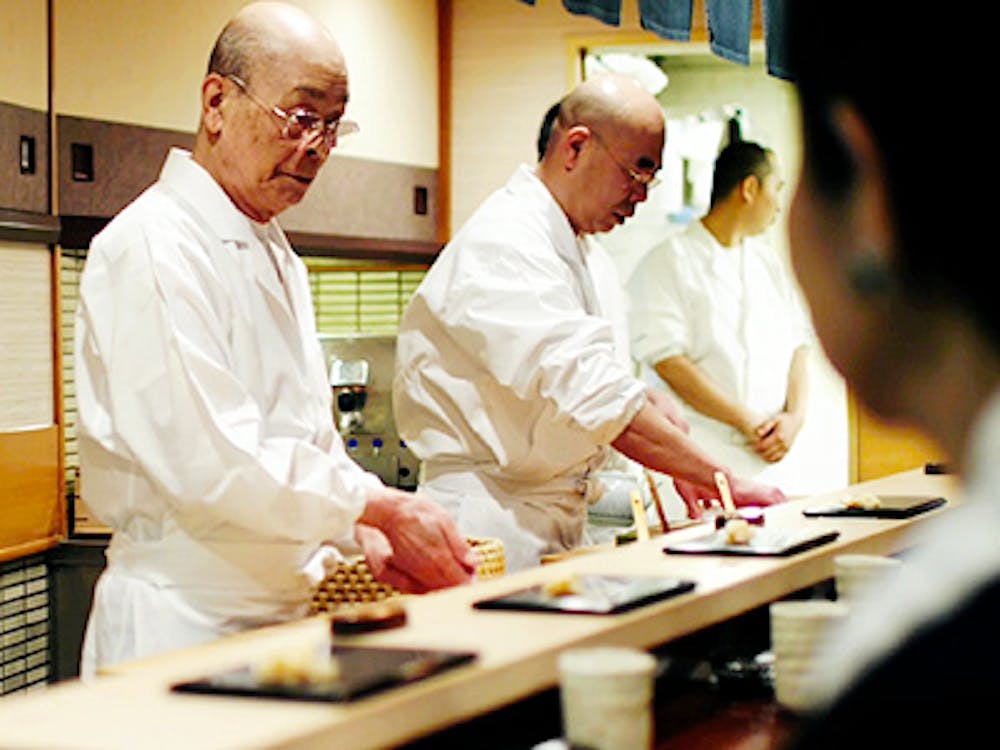There is no such thing as perfection in art, but 85–year–old Jiro Ono's sushi is the closest thing to it. In “Jiro Dreams of Sushi” (2011) we see scenes of repetitious sushi building set to the music of Tchaikovsky and Philip Glass and shot in meditative slow–motion in Jiro’s Michelin three–star restaurant. It may be tragic that Jiro’s craft of sushi–making will never reach pure perfection, but what the film shows is the beauty inherent in pursuing it.
It’s normal to ask somewhere in the 82–minute movie’s runtime why Jiro has been perfecting each element of his sushi–making for 75 years. He’s sacrificed his college education, his time with his children—things that we normally associate with a complete, happy life. Why does Jiro work so relentlessly to perfect the art of sushi, even when he recognizes that there’s no such thing?
But as we watch the film and start to question why Jiro has sacrificed so much for what seems so little, we feel compelled to listen to him talk about how each ingredient of the sushi has a peak time and what he has done to make sure that the peak time is the moment before a customer consumes it. We listen to a side–story where an apprentice of Jiro had cooked an egg over 200 times before Jiro deemed it worthy, and how the apprentice wept from joy because of it. These are all facets of Jiro’s pursuit of perfection and there is something emotional in these stories of absolute dedication. In a way, Jiro’s path parallels ours. Aren’t we all trying to pursue our own paths? Don’t we realize at times how fruitless our own goals for unachievable perfection are? But instead of taking these realizations negatively, what brings us back is the beauty in what we pursue. We each dream of our own ambitions, and it just so happens that Jiro dreams of sushi.

